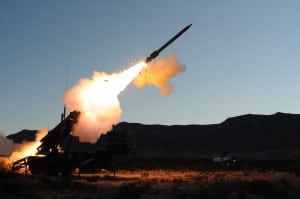A lead Army missile defense official said last Friday the service is assessing how to bring down the operational tempo and global demand for its Patriot air defense batteries by “toggling up” new attack capabilities and contributions from allies and partners.
“There is never going to be enough Patriot [capability] to meet all of the demands that are out there. There’s not going to be enough THAAD. I’ve told my team we can’t ‘Patriot’ our way out of this,” Lt. Gen. Daniel Karbler, head of Army Space and Missile Defense Command, said during a Center For Strategic and International Studies discussion. “You’ve got to reduce demand. You either increase supply or decrease demand. So right now what we’re looking at is how you decrease demand.”

Gen. James McConville, the Army chief, has talked in recent weeks that the Army must assess its posture requirements around the world as it looks to save funds and realign for future competition, with Karbler noting that the air and missile defense force has the highest operational tempo across the service.
“When you take integrated air and missile defense, look at the toggles that are out there. It’s active defense, attack ops, passive defense, joint contributions and allied contributions. Well, for too long, that toggle for active defense has been thrown all the way up and all the other toggles…some are all the way down, some go up and down and fluctuate a little bit. But the active defense one has always been up. Everybody wants Patriots,” Karbler said.
Karbler cited the new Long Range Hypersonic Weapon as an “attack ops” capability that can act as a deterrent to help bring down demand on the Army’s Patriot batteries.
“That is a terrific attack ops platform to have to counter any adversary’s ballistic missiles before it gets out of the silo and before it gets off the runway,” Karbler said.
The Army began delivering equipment for its first prototype hypersonic weapon capability in March, with plans to field the first battery of initial operational capability in FY ‘23 (Defense Daily, Feb. 10).
Karbler pointed to South Korea and Japan’s missile defense capabilities as presenting opportunities in the Indo-Pacific region, and cited partners in the Middle East recently bolstering their own air and missile defense capabilities through foreign military sales.
“Our allies and partners integrated air and missile defense capabilities, they are really coming up to par. We look at what Saudi Arabia’s doing every day. We look at where the United Arab Emirates is with their Patriot. Our allies are buying Patriot. They’re buying THAAD out there. They’re getting the sensors there. The next step now is how do we integrate those allies and getting good synergy from the capabilities our allies are buying so that it’s not just stovepiped pockets of excellence around there,” Karbler said.